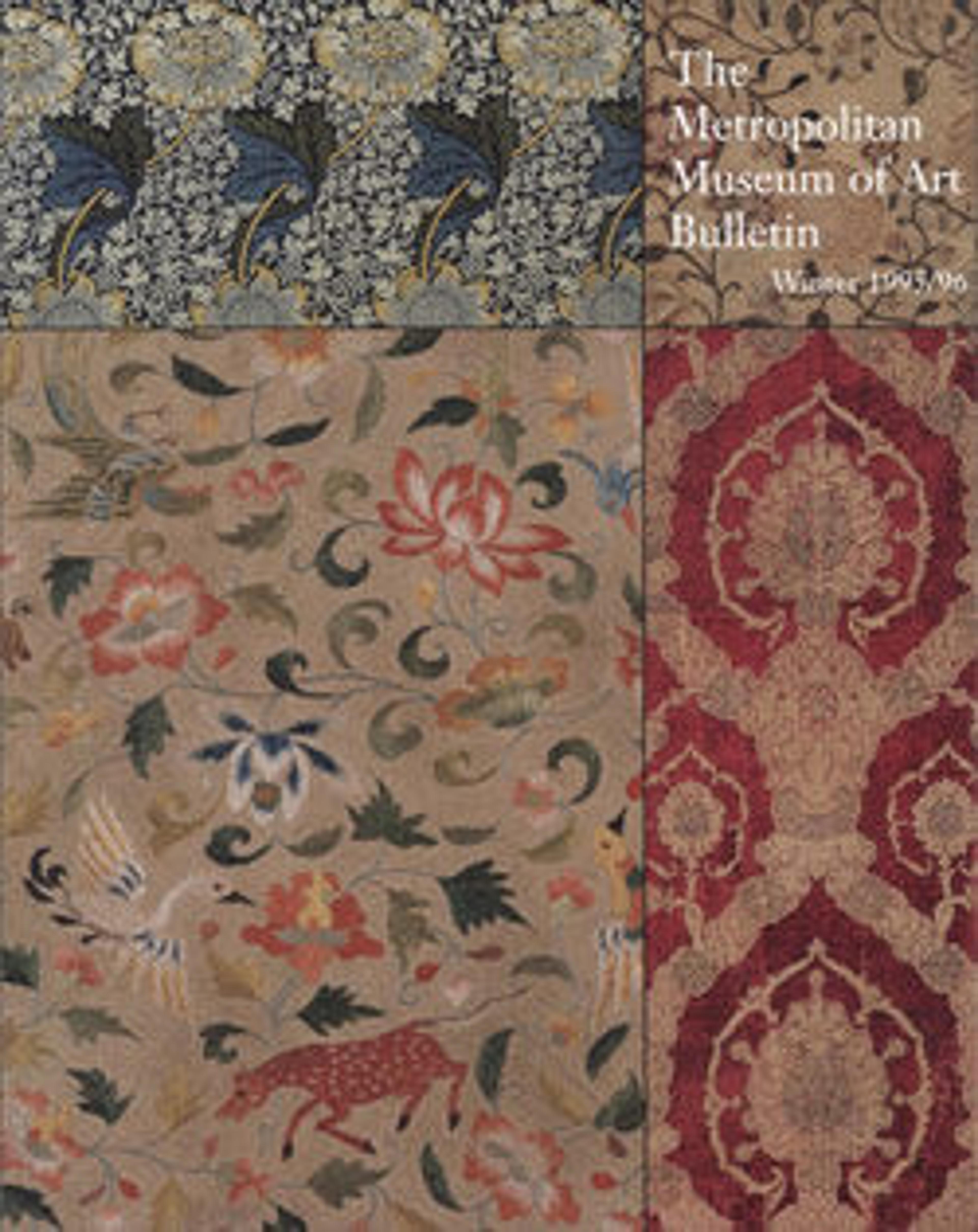Altarcloth
The Adoration of the Magi appears on one end of this exceptionally large, well-preserved altar covering from the convent of Altenberg, not far from Trier in Germany. Christ as judge; Saint Elizabeth of Hungary and Thuringia, mother of a thirteenth-century abbess of Altenberg; and Saint Nicholas, patron saint of the convent, are among the other figures represented in richly textured embroidery. A monk in their company kneels on a coat of arms identified as that of Henricus de Cronenberg.
An inscription in Latin names the nuns who served as needleworkers—Sophia, Hadewigis, and Lucardis—and invokes Jesus whit the prayer that their work be acceptable to him.
Linen was a cloth valued since ancient times. The Gospel accounts specify that the body of Jesus was wrapped "in fine linen." Linen became an important material in the service of the altar, more lustrous and less likely to soil than cotton. The nuns at Altenberg may have had an additional reason for creating this white-on-white embroidery; they were known as "white canons" because of the color of their habits. The embroidery is one of only a few that passed into private, and eventually, museum collections after the secularization of the convent by Napoleon in 1803.
An inscription in Latin names the nuns who served as needleworkers—Sophia, Hadewigis, and Lucardis—and invokes Jesus whit the prayer that their work be acceptable to him.
Linen was a cloth valued since ancient times. The Gospel accounts specify that the body of Jesus was wrapped "in fine linen." Linen became an important material in the service of the altar, more lustrous and less likely to soil than cotton. The nuns at Altenberg may have had an additional reason for creating this white-on-white embroidery; they were known as "white canons" because of the color of their habits. The embroidery is one of only a few that passed into private, and eventually, museum collections after the secularization of the convent by Napoleon in 1803.
Artwork Details
- Title: Altarcloth
- Artist: Sophia, Hadewigis, and Lucardis
- Date: second half 14th century
- Culture: German
- Medium: Linen embroidered with satin, chain, chevron, and Roumanian stitches
- Dimensions: Overall: 47 1/2 x 156 in. (120.7 x 396.2 cm)
Storage (Rolled and boxed): 9 3/4 × 75 1/4 × 11 in. (24.8 × 191.1 × 27.9 cm) - Classification: Textiles-Embroidered
- Credit Line: Fletcher Fund, 1929
- Object Number: 29.87
- Curatorial Department: Medieval Art and The Cloisters
More Artwork
Research Resources
The Met provides unparalleled resources for research and welcomes an international community of students and scholars. The Met's Open Access API is where creators and researchers can connect to the The Met collection. Open Access data and public domain images are available for unrestricted commercial and noncommercial use without permission or fee.
To request images under copyright and other restrictions, please use this Image Request form.
Feedback
We continue to research and examine historical and cultural context for objects in The Met collection. If you have comments or questions about this object record, please contact us using the form below. The Museum looks forward to receiving your comments.
